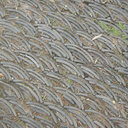Mutations of the EPHA2 receptor tyrosine kinase gene cause autosomal dominant congenital cataract.
Słowa kluczowe
Abstrakcyjny
Congenital cataracts (CCs) are clinically and genetically heterogeneous. Mutations in the same gene may lead to CCs differing in inheritance, morphology and severity. Loci for autosomal dominant posterior polar CC and total CC have both been mapped to the chromosomal 1p36 region harboring the EPHA2 receptor tyrosine kinase gene. Here, we report mutations of EPHA2 in three CC families from different ancestral groups. In a Chinese family with posterior polar CC, we identified a missense mutation, c.2819C>T (p.T940I), replacing a critical amino acid that functions at the receptor oligomerization interface. In a British family with posterior polar CC and an Australian family with total CC, we found a frameshift mutation (c.2915_2916delTG) and a splicing mutation (c.2826-9G>A), respectively. These two mutations are predicted to produce novel C-terminal polypeptides with 39 identical amino acids. Yeast two-hybrid analysis showed stronger interaction between the total CC-associated mutant EPHA2 and low molecular weight protein-tyrosine phosphatase, a negative regulator of EPHA2 signaling. Our results implicate the Eph-ephrin signaling system in development of human cataract and provide a novel insight into the molecular mechanism underlying the pathogenesis of human CCs.



